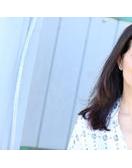Welcome to binNotes | redThread™
Inspired stories about wine and taste makers.
By L.M. Archer, FWS | Bourgogne ML
Each first Friday of every month through 2016, I’ve invited some of my fellow wine writers the opportunity to join me here on binNotes | red Thread™ to shine a light on a rare, obscure, or under-appreciated wine region for which they feel a special passion.
This month I am truly honored – and a bit nervous – to share an exclusive feature in the Guest Writer series by one of the world’s most respected wine writers – and author of Jura Wine – Wink Lorch.
The preeminent authority on the wines of Jura and Savoie, Wink informs me “Attached is a completely originally piece, just for you … I hope you like it….”
Indeed. Please enjoy.
❦❦❦
Guest Writer Series | № 8 | Wink Lorch Exclusive – Jura Wine
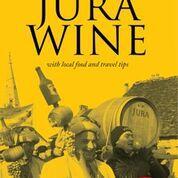
Five Jura Myths and One Big Fact
By Wink Lorch
The little eastern France region of Jura has enjoyed a surge of interest around the world in the past five years, but surprising amounts of misinformation still filters through to my ears. And, sometimes I wonder whether wine students and consumers have any grasp of reality when it comes to this intriguing region. So, I’m going to tackle this head on and hope it helps lift the veil from Jura eyes.
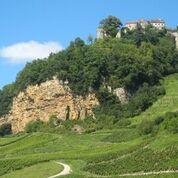
THE FIVE MYTHS:
- Jura and Savoie are linked
For years the little French wine regions of Jura and Savoie have been linked together in books, magazines, wine lists and even in wine professionals’ minds.
They have one key aspect in common: both are tiny wine regions on the foothills of mountains in eastern France. But, there are few similarities beyond this. They grow different grapes, make different wine styles and have a radically different landscapes and even people. Jura, in some ways has more in common with Burgundy, with its most planted grape being Chardonnay. Further south, Savoie has more in common with the Rhône Valley, in terms of grapes at least. And there is a clue in the name. The Jura wine region is at the base of the Jura mountain range, not the Alps. The Jura mountain range is much older and lower than the Alps and divides France from Switzerland north-west of Lac Léman (Lake Geneva).
So why are they linked? For editorial convenience. Most publishers can’t devote too many column inches or pages to two such tiny regions; you can design a map easily with the two together – Jura north-west of Geneva and Savoie to the south and south-east; and you can argue (wrongly) that they are both high altitude vineyards.
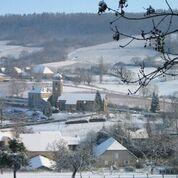
2. The vineyards are high altitude:
What is high altitude? The term has become mythical in its significance – embodying all that is cool and fresh in wine, yet it’s meaningless without being put in context. Here are the facts: Jura vineyards lie between 220 and 450 meters (720-1450 feet) above sea level, roughly the same as the vineyards in Alsace. Most Jura vineyards lie below 350 meters and as a further comparison, the finest premier and grand cru vineyards of Burgundy’s Côte d’Or lie between 250m and 340m. The Jura mountains contribute to the particular weather systems that effect the vineyards and the vineyards can be pretty steep, but no, this is not a high altitude region.
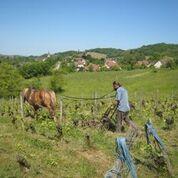
3. Jura vineyards are all organic:
There isn’t a wine region in the world that is 100% organic yet. Jura has indeed a relatively high proportion of organically-certified vineyards – but that’s only around 17% in terms of vineyard area (near the top of the list for French wine regions). It represents around one quarter of all producers, as organic producers tend to be smaller, but probably less than 15% of volumes as yields are lower. A handful are biodynamically-certified, but many more use some biodynamic techniques.
The Jura’s rainy climate gives its vignerons many challenges especially weed control but also fungal diseases. However, those producers who have been able to change their soil management to mechanical weeding and their disease protection to organically-approved sprays have seen real benefits in vine balance and subsequent fruit quality.

4. Jura is all about rare or indigenous grape varieties:
Well, no it isn’t, because Chardonnay is the most planted grape variety, covering around 42% of the whole vineyard and Pinot Noir is the region’s second most planted red variety, covering around 13% of the whole vineyard. This is not a modern phenomenon, or a fashion, absolutely the contrary – there is historical evidence that these Burgundian varieties were grown as far back as the 14th Century, when the Jura region was part of the Duchy of Burgundy. However, the other main varieties can be considered Jura’s own – evidenced by DNA testing, all three appear to have started life in the Jura. For whites, there is Savagnin, genetically identical to Traminer (the non-aromatic version of Gewurztraminer), but grape biologists seem convinced it began life in the Jura. Savagnin is best known as the only variety permitted for Vin Jaune, but a whole host of other whites are made from it.
The most planted Jura red variety is Poulsard, also known as Ploussard. A difficult variety to grow, in the right hands and from the right year, it can produce delightfully refreshing pale-coloured reds. The other local Jura red, Trousseau, has perhaps the most quality potential, making light but characterful reds that pack a real punch. It is another that started life in the Jura, but has travelled to Iberia, most notably to Portugal, where it is called Bastardo, grown in much greater quantities than Trousseau is in the Jura.

5. Jura whites are all oxidised:
Not true, no correctly-made Jura white is oxidised, but many are oxidative including the most famous Jura wine, Vin Jaune, but this accounts for less than 5% of the region’s production. Made from the Savagnin grape, in spring the new white wine is transferred into barrels that are incompletely filled, stored in a ventilated ‘cellar’ (that may be above ground) where the temperatures fluctuate with the seasons. After some months a film of yeast, called the veil, similar to Sherry’s flor yeast, forms on the surface of the wine and this effectively protects the wine from oxidation, although there was some influence in the early stages, hence the term ‘oxidative’. The wine is left in barrel without topping up until bottling in its distinctive dumpy 62cl bottle, called a clavelin, and it may not be sold until 6 years and 3 months after harvest.
Many Savagnin wines begin life in the same way but are not aged for so long; some is also blended with Chardonnay and there are even Chardonnays made in the same way. However, there are also excellent white wines from both Savagnin and from Chardonnay (and very occasionally, blends) that are made in a conventional way, shielding the wine from any contact with oxygen. In the region, these are sometimes referred to as ouillé meaning ‘topped up’.
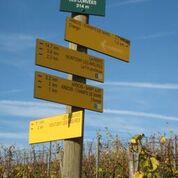
THE ONE BIG FACT
Jura has a tiny production
In most years France is the second largest wine-producing region in the world. Yet, in a typical year the Jura makes just 0.2 per cent of France’s total volume of wine. That equates to about 10 million bottles a year of which almost half are made by three companies. Nearly 200 producers share the rest of the cake, among them the most famous names and many of these are very tiny indeed. When you think that only just over 10 per cent of the production is exported to countries around the world, then it doesn’t take long to see why there is such a demand for the wines from certain cult producers. Add to this that every vintage from 2012 has been challenging in a different way, reducing production volumes, and the pressure on supplies has increased dramatically.
THE BONUS REALITY CHECK
One quarter of Jura’s wines sparkle
Jura reds and whites can be highly unusual, but most Jura sparkling wine is more accessible and easy to understand. Over 25% of Jura’s wine production is of Crémant du Jura, sparkling wine made in the traditional method, either white or rosé. Most white is Chardonnay-based, though increasingly producers are blending in Pinot Noir and most is made in a Brut style. Rosés can be made from any of the red grapes, and some white may be blended into the base. The accessible price as well as style and the overall excellent quality, even from the largest wine producers, means that Crémant is the most exported of all Jura wines.
© Wink Lorch, 2016.
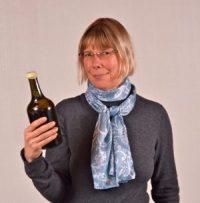
About Wink Lorch
Wink Lorch is a British wine writer, editor and educator, who divides her time between London and the French Alps. She has contributed to numerous books, including those by Jancis Robinson MW, Tom Stevenson and Oz Clarke and has written for trade and consumer wine publications worldwide in print and online. She is also a popular wine speaker and presenter and was a founder of the Association of Wine Educators.
Since the year 2000, Wink has developed a speciality on the wines of Savoie and Jura becoming the go-to source for information on these two regions. In 2014, following a successful Kickstarter campaign, she self-published her first book, Jura Wine. The book has sold in 40 countries, received rave reviews and won the Drinks Prize in the André Simon Food & Drink Book Awards 2014 as well as being shortlisted for Book of the Year in the Louis Roederer International Wine Writers’ Awards 2014. Wink is currently preparing her second book on Wines of the French Alps, featuring Savoie, Bugey and smaller Alpine regions. She will be leading a tour of the Jura for the Wine Scholar Guild in 2017.
You can read more on Wink’s Jura blog at www.jurawine.co.uk and you can buy her book for shipment internationally direct from her website at www.winetravelmedia.com – Wink would prefer you to buy there than to purchase from Amazon (where it may well cost you more and be delivered more slowly!).
❦❦❦
Story and images printed by permission of the author, Wink Lorch.
Copyrighted 2016 binNotes | redThread™. All Rights Reserved.
